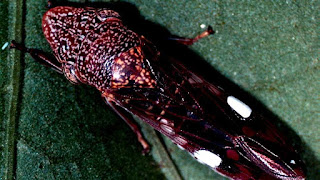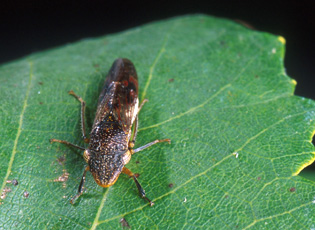

(Xanthomonadales: Xanthomonadaceae) during feeding 2. They transmit (acquire, retain, and inoculate) the xylem-limited bacterial pathogen Xylella fastidiosa Wells et al. Sharpshooter leafhoppers (Hemiptera: Cicadellidae: Cicadellinae) feed on plant tissues using their piercing-sucking mouthparts, termed stylets 1. Improved understanding of these processes could lead to new targets for preventing diseases caused by X. The 3D model can also be used in future fluid dynamic simulations to better understand acquisition, retention, and inoculation of X. The vivid 3D illustrations herein and supplementary interactive 3D figures are suitable resources for multidisciplinary researchers who may be unfamiliar with insect anatomy. The model is used to illustrate preexisting and newly defined anatomical terminology that is relevant for investigating fluid dynamics in the functional foregut of sharpshooters. Herein, a 3D model of the blue–green sharpshooter functional foregut is derived from a meta-analysis of published microscopy images. fastidiosa vector is the blue–green sharpshooter, Graphocephala atropunctata (Signoret, 1854). fastidiosa biofilm formation and fluid dynamics in the functional foregut of sharpshooters, which together result in egestion (expulsion) of fluids likely carrying bacteria. Bacterial acquisition and inoculation mechanisms are linked to X. This pathogen causes economically significant diseases in olive, citrus, and grapes on multiple continents. "We are thrilled to be a part of this project.Sharpshooter leafhoppers (Hemiptera: Cicadellidae: Cicadellinae) are important vectors of the plant pathogenic bacterium Xylella fastidiosa Wells et al. “The pest control that we perform everyday plays an important part in public health but this project also protects one of California's signature resources," he said. Steed added that it’s been gratifying for him and his team to be involved in these eradication efforts. To date, Steed said Neighborly has treated about 60 homes.ĭuring the next two months, King said, the Solano County Department of Agriculture will continue to monitor the treated areas and continue public outreach efforts to raise homeowner awareness about the glassy-winged sharpshooter. “We’ve been treating 15-30 homes per days,” said Steed, who added that ag department officials are on site to witness the application. Prior to the application, the county will notify residents, and Steed said the goal is to treat homes where “finds” have been confirmed, as well as adjacent properties. Right now, it is fall (in California) so we have to be careful with wind, but we are treating any host material that we can,” Steed said. Neighborly Owner Jim Steed said for this year’s treatment his company performed foliar treatments using Tempo Ultra SC. Neighborly had experience with the glassy-winged sharpshooter, having done this work the last time they were found in Solano County in 2004. Once this is accomplished, the next step is eradication efforts.Īfter a formal bid process, the county selected Neighborly Pest Management, Sacramento, Calif. King said the first part of the Pierce’s disease control program is to saturate these residential properties with sticky traps to limit the extent of the infestation.

The glassy-winged sharpshooter thrives on most landscaping plants and vegetation (e.g., citrus, jasmine and crape myrtle trees) so the concern is that they will become established on residential properties and then spread to nearby vineyards.


 0 kommentar(er)
0 kommentar(er)
